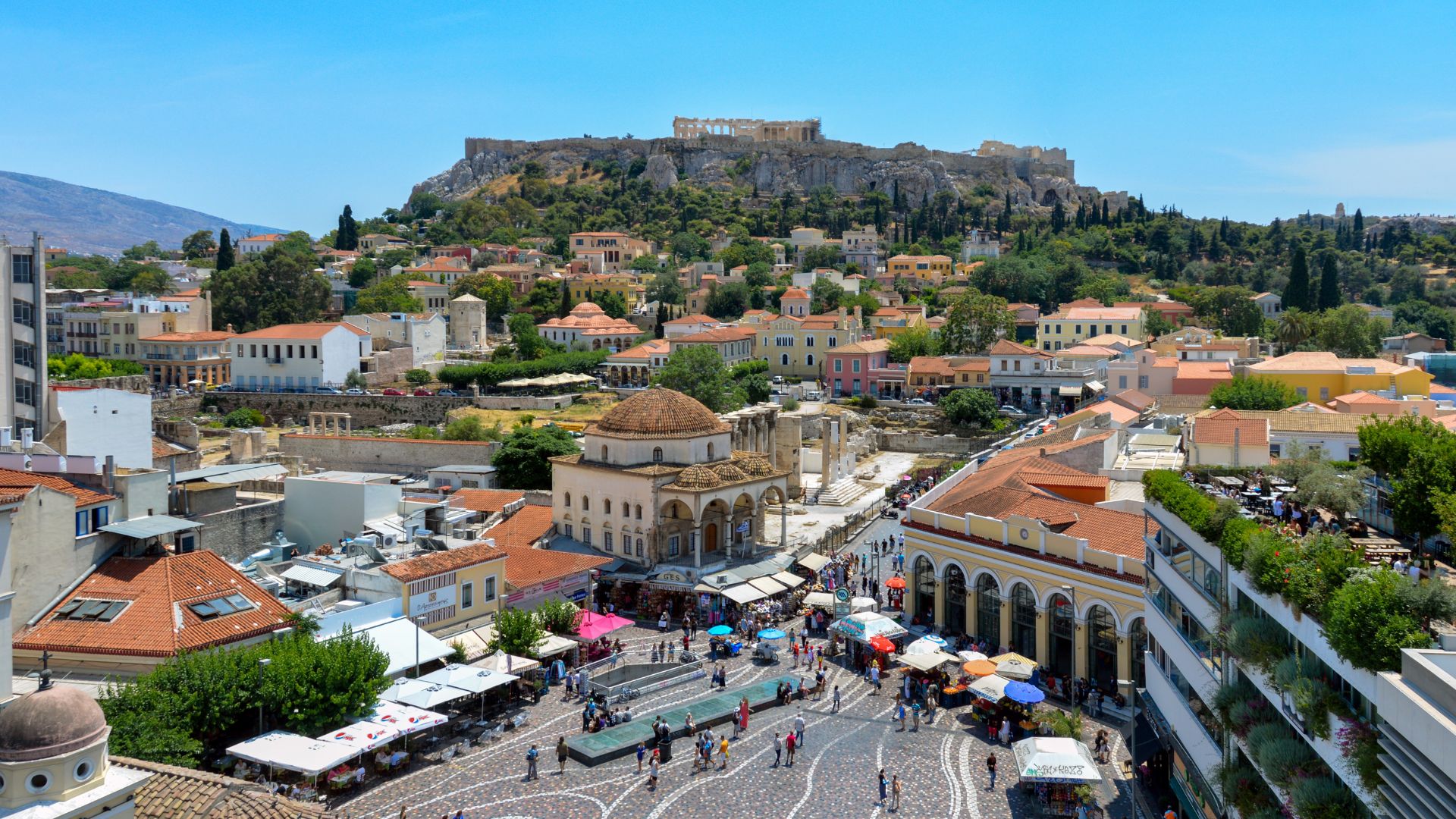In today’s world, the city of Athens tends to conjure up images of the Parthenon standing proudly on the Acropolis, a cool blue sky behind it as golden rays of Mediterranean sun pierce the clouds. Many people think of Socrates, Plato, and Aristotle, strolling in simple tunics and sandals through the market while debating the nature of reason and existence. Or they think of the famed school for philosophers and statesmen called simply, “The Academy”. The city may evoke familiar stories of the Olympian Gods, like the vain and wrathful king of the Gods, Zeus. It may even just be limited to images of the chalk-white marble statues made to honor those gods.
These are deserving associations, and each element has influenced the world in immeasurable ways. But they only capture a narrow sliver of the nearly 5,000 years of history Athens has witnessed. This is a history that has woven through it the rise and fall of empires, from the Persians to the Romans, and to the Byzantines to the Ottomans. Athens was once at the nexus of trade in the Mediterranean, and through it converged cultures of North Africa, Western Europe, and the Middle East, all of whom left their mark on the distinct identity of the city. Democracy started here, as did the dramatic forms of tragedy and comedy. This is where the modern Olympics were founded, and where the country of Greece has its capital.
From this wide history, it can be difficult for a modern visitor to truly experience the full spectrum that is Athens. This guide hopes to provide some essential areas to visit in Athens to cover more than just the Acropolis (though we will talk about that one too!), and get glimpses into some of the major epochs.
1. The Acropolis
Of course we have to start here. At the top of every visitor’s list is perhaps the most iconic landmark in all of Greece: the Acropolis. As one of the central focal points of the area, this hill was always considered one of the most important political and religious locations in Athens. This resulted in it housing everything from temples to theaters to courtrooms, either on top or in the nearby vicinity. Of the most iconic buildings is the temple to Athena, known better as the Parthenon. Built in the 5th century BC, the Parthenon has inspired countless buildings around the world, including universities, courthouses, capitals, and museums. Its colonnaded facade can be recognized across the globe. Though much of it was destroyed by the Ottomans, and a fair amount of its priceless friezes were taken by the British, the remaining structure still inspires thousands of visitors every day. With sweeping views of the city and the Aegean, the Acropolis is not just a dusty artifact of antiquity-- it is one of the premier destinations in the city.

2. Monastiraki Square
In stark contrast to the crumbled feta-cheese like ruins on the Acropolis is the district known as Monastiraki Square. This square is famous for the myriad of vendors and shops tucked between ruins from various points in Athens history. Hadrian’s Library and the Roman Forum from the 2nd century AD, at the height of the Roman Imperial age, stand mere feet away from bustling cafes and restaurants serving some of Athens’ most delicious food. These ruins point to the declining significance of Athens as a Mediterranean power, but also to the place of reverence it was held in even after its decline. Turn around and you will find the Tzisdarakis Mosque, a remnant from the Ottoman era-- over a thousand years after the Romans-- that has now been converted into the Museum of Modern Greek Culture. One of the most famous Flea Markets in all of Europe spills out from the spokes from the main square into the surrounding neighborhoods, making this a great area to experience the vibe and essence of the modern city, as well as find some great deals on souvenirs.

3. Syntagma Square
When wandering the ruins of Athens, it can be easy to forget this is also a modern capital of an industrialized nation. Heading into Syntagma Square will build that introduction to the political center of Greece. Here you will find the Old Royal Palace, which houses the Greek Parliament. The name “Syntagma Square” translates to “Constitution Square”, a name bestowed to it after the revolutionary, Dimitrios Kallergis, and his forces gathered in front of the palace and demanded the granting of a constitution. One can also visit the National Gardens, where many will go to escape the hustle and bustle of the city. As one of the most energetic and connected parts of the city, you will surely find a rich diversity of architecture, people, cuisines, and art everywhere you look.

4. Plaka
Perhaps the oldest true neighborhood in Athens, the area of Plaka was built on the ruins of previous civilizations and lies in the shadow of the Acropolis. This has given it special protected status in Greece, with strict zoning and conservation regulations. All of this has preserved its distinct atmosphere, and makes it a great neighborhood to explore and get to know the local culture. Many of the city’s best museums can be found in Plaka, including the Acropolis Museum, Museum of Greek Folk Art, and Athens University Museum. Additionally, the neighborhood has served as the backdrop for many of Greece’s most famous movies, such as “And the Wife Shall Revere Her Husband,” and “The Drunkard.” As dynamic as the history is in the neighborhood, it can still be an intimate and quiet place to take a twilight stroll.

